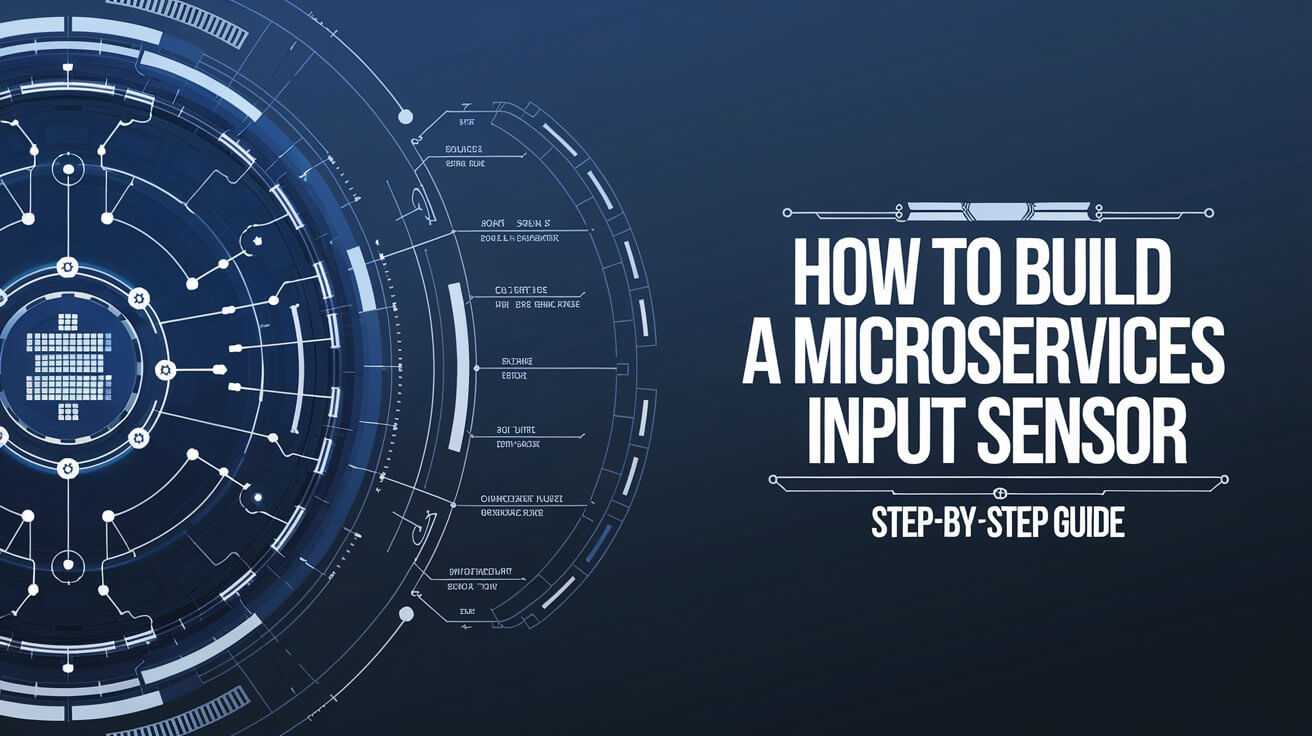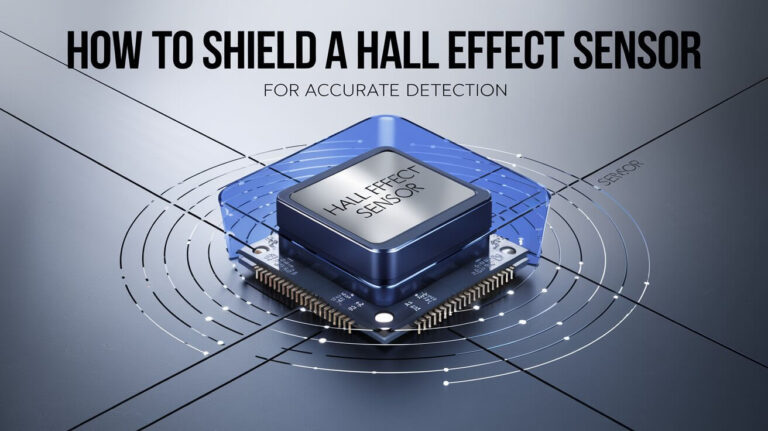How to Build a Microservices Input Sensor: Step-by-Step Guide

Microservices have become a go-to solution for building scalable and flexible applications, especially when dealing with real-time data. One key aspect of microservices architecture is the ability to efficiently handle input data, which is crucial for systems like IoT devices, real-time monitoring tools, and various types of sensors. In this guide, we’ll explore how to build a microservices input sensor step by step, covering key technologies, design patterns, and best practices for handling input in a scalable and efficient way.
What is a Microservices Input Sensor?
A microservices input sensor is a component of a distributed system designed to capture, process, and distribute sensor data across various services. These microservices communicate asynchronously, often through message brokers like Apache Kafka or RabbitMQ, and are built to handle high-throughput input streams while ensuring data validation and fault tolerance.
Why Are Microservices Important for Input Sensors?
Microservices architecture allows you to break down a large system into smaller, self-contained services. This separation of concerns ensures that each service can be developed, deployed, and scaled independently, making it easier to manage sensor data and handle real-time events. In this context, microservices are ideal for applications that rely on frequent input, such as weather monitoring systems, automated manufacturing, or even smart cities.
Understanding Microservices Architecture for Input Sensors
What Are Microservices?
Microservices is an architectural style where an application is developed as a collection of loosely coupled services. Each service has its own specific function and can communicate with others through lightweight mechanisms like REST APIs or messaging queues. Unlike monolithic architectures, microservices are designed to be modular and scalable.
Key principles of microservices:
- Loosely Coupled: Each service operates independently.
- Autonomous: Services can be deployed and scaled individually.
- Stateless: Services do not store client-side information, allowing better fault tolerance and scalability.
- Scalable: Services can be scaled horizontally, adding more instances when needed.
Importance of Input Sensors in Microservices
Input sensors are the backbone of many modern applications that rely on real-time data. These sensors generate vast amounts of data, which needs to be processed in real-time to ensure accurate responses. Microservices are ideal for handling these inputs because they allow data to be processed in parallel across various services.
For example:
- In a smart city, sensors monitor traffic, weather, and public utilities. Each sensor’s data is handled by different microservices, allowing the city’s infrastructure to operate smoothly and adjust in real-time.
- In automated manufacturing, sensors monitor machinery, and microservices react to any changes or issues instantly to prevent downtime or failures.
Essential Components of a Microservices Input Sensor
Core Technologies
When building a microservices input sensor, you need a solid tech stack. Here are the primary components:
- Programming Language: Common choices are Python, Node.js, or Go, depending on performance needs and developer expertise.
- Message Broker: Apache Kafka or RabbitMQ are widely used to handle real-time input from sensors. Kafka is especially useful for its high throughput and fault-tolerance capabilities.
- Database: Databases like MongoDB or PostgreSQL are often used for storing sensor data. MongoDB, in particular, excels at handling large volumes of unstructured data from sensors.
- Containerization: Docker allows for easy deployment of services, and Kubernetes can manage scaling and orchestration.
- API Gateway: An API Gateway like NGINX or Kong is often used to manage and route traffic between microservices.
Input Handling in Microservices: Best Practices
Data Validation
Data validation ensures that incoming sensor data conforms to expected formats. For example, a sensor that tracks temperature should send numeric values within a certain range. Implementing schema validation, regular expressions, or custom logic helps ensure data accuracy before processing.
Input Transformation
Input transformation involves converting raw data into a format that is usable by the service. For instance, a temperature sensor may send data in Celsius, but your application requires Fahrenheit. Transformation ensures that data is consistent across all services.
Asynchronous Processing
Asynchronous processing is crucial for handling input in real-time without blocking the main execution thread. By using asynchronous event handling, services can respond to sensor inputs immediately, allowing for faster data throughput and lower response times.
Caching for Efficiency
Caching frequently used data can significantly improve microservice performance. For example, if a sensor sends the same data multiple times, caching can prevent redundant processing. Tools like Redis are commonly used for caching data in memory.
Step-by-Step Guide to Building a Microservices Input Sensor
Step 1: Setting Up Your Development Environment
To begin building your microservices input sensor, you’ll need to set up a development environment with the following tools:
- Programming Language: Python or Node.js.
- Message Broker: Install Apache Kafka or RabbitMQ for managing message queues.
- Containerization: Docker should be used to package your services, and Kubernetes can manage scaling.
Step 2: Creating the Input Sensor Microservice
Once your environment is ready, the next step is to create a simple microservice that can capture input from a sensor. Let’s consider building this in Python using the Flask framework.
Here’s a basic example:
pythonCopy codefrom flask import Flask, request, jsonify
app = Flask(__name__)
@app.route('/sensor', methods=['POST'])
def sensor_input():
data = request.json
if validate_data(data):
process_data(data)
return jsonify({"status": "success"}), 200
else:
return jsonify({"status": "failure", "reason": "Invalid data"}), 400
def validate_data(data):
# Implement validation logic here
return True
def process_data(data):
# Process the sensor input here, like sending to Kafka or storing in a database
pass
if __name__ == '__main__':
app.run(debug=True)
This simple microservice captures sensor input through a REST API endpoint, validates the data, and processes it accordingly.
Step 3: Input Data Processing and Validation
Implement validation logic to ensure data accuracy. For instance, check if the data falls within the expected range or format. This is especially important for systems that rely on precise input, such as healthcare sensors or industrial automation tools.
Step 4: Handling Data Streams in Real-Time
Kafka or RabbitMQ are essential for managing the flow of real-time data from sensors. Here’s an example of how Kafka can be used to process sensor data:
- A producer service sends sensor data to a Kafka topic.
- The consumer service reads from the topic and processes the data.
This enables efficient handling of large volumes of sensor data without overloading any single service.
Step 5: Scaling the Input Sensor Microservice
Scaling your microservices is essential for handling increased loads. Kubernetes is commonly used to automatically scale services based on demand.
Additionally, implementing Circuit Breaker and Saga Patterns can help manage long-running processes and prevent cascading failures in case one service fails.
Design Patterns for Efficient Input Sensor Handling
Command Query Responsibility Segregation (CQRS)
CQRS separates the read and write operations of a service, allowing you to optimize each operation individually. For example, a sensor may write real-time data, while a different microservice reads that data to analyze trends.
Event-Driven Architecture (EDA)
EDA is a design pattern where services communicate through events. This pattern is ideal for systems that handle real-time data since services only react to events when they happen, reducing resource usage.
Saga Pattern for Complex Input Scenarios
The Saga pattern is used for managing long-running transactions. If a process involves multiple microservices, the Saga pattern ensures that each step is completed successfully before proceeding, making it ideal for handling complex input scenarios.
Circuit Breaker Pattern
Circuit breakers prevent system failure due to one service’s failure. This is critical when dealing with sensor inputs, as it ensures the system remains stable even if one component fails.
Advanced Input Sensor Techniques
Input Transformation and Data Enrichment
In advanced systems, sensor data often needs to be enriched with additional information before it can be fully processed. For example, weather data might need to be enriched with historical data to provide deeper insights.
Caching for Faster Data Access
By caching frequently used data, you can improve the speed and efficiency of your microservices. This is particularly useful when the same sensor data is accessed repeatedly.
Monitoring and Logging
Using tools like Prometheus for monitoring and the ELK stack for logging can help ensure that your microservices are operating smoothly. Real-time logging is crucial for identifying issues in sensor data processing.
Real-World Applications of Microservices Input Sensors
IoT and Smart Cities
In smart cities, sensors monitor everything from traffic to pollution levels. Microservices allow these inputs to be processed in real-time, enabling instant responses like adjusting traffic lights or deploying emergency services.
Automation in Manufacturing
Sensors in automated manufacturing lines monitor equipment performance and detect faults. Microservices ensure that this data is processed instantly to avoid downtime or machinery damage.
Challenges and Solutions in Building Microservices Input Sensors
Handling Sensor Data in High-Throughput Systems
In systems where sensors generate massive amounts of data, handling the throughput can be challenging. Implementing event-driven architectures and using message brokers like Kafka helps manage these high volumes effectively.
Ensuring Data Integrity and Fault Tolerance
Data integrity is critical in sensor-based systems. Fault tolerance mechanisms, such as retries and backups, ensure that no data is lost even if services fail temporarily.
Conclusion
Building a microservices input sensor requires a combination of the right architecture, technologies, and design patterns. By using event-driven architectures, asynchronous processing, and advanced design patterns like CQRS and Saga, you can ensure that your system is scalable, reliable, and efficient# How to Build a Microservices Input Sensor
Microservices have revolutionized modern software architecture by enabling systems to be built as a collection of loosely coupled services. For applications that rely on real-time data input—especially from sensors in IoT, automation, or smart city projects—microservices play a critical role. This guide will cover how to build a microservices input sensor, breaking down the architecture, technology, and best practices required to ensure efficient data processing at scale.


